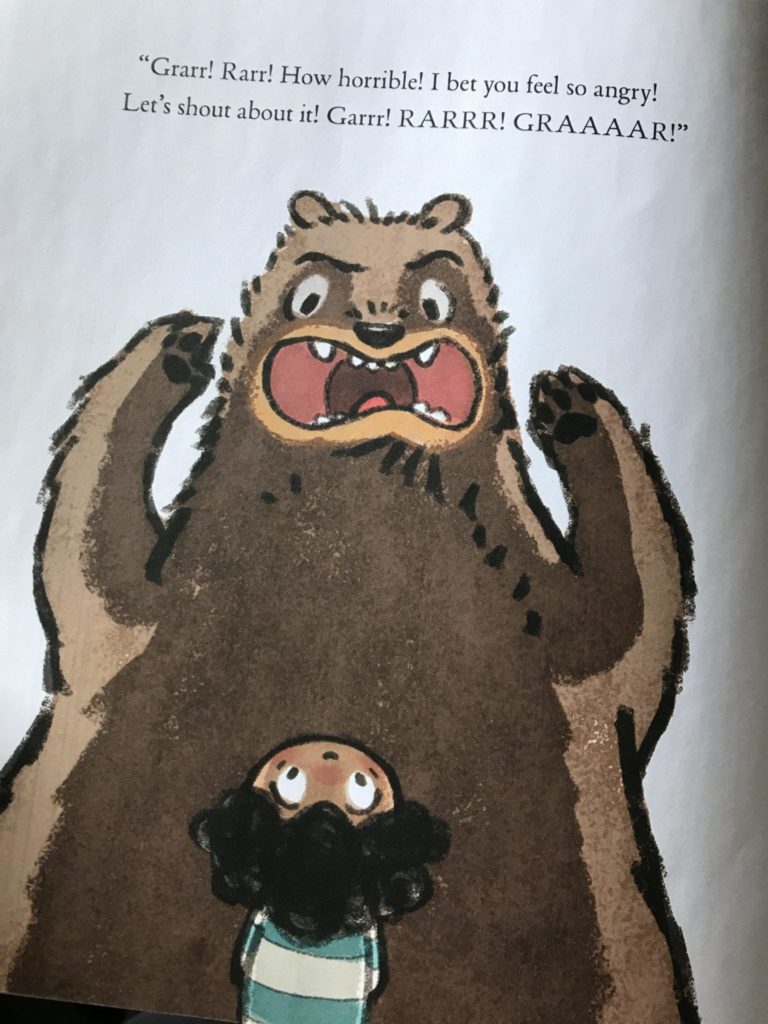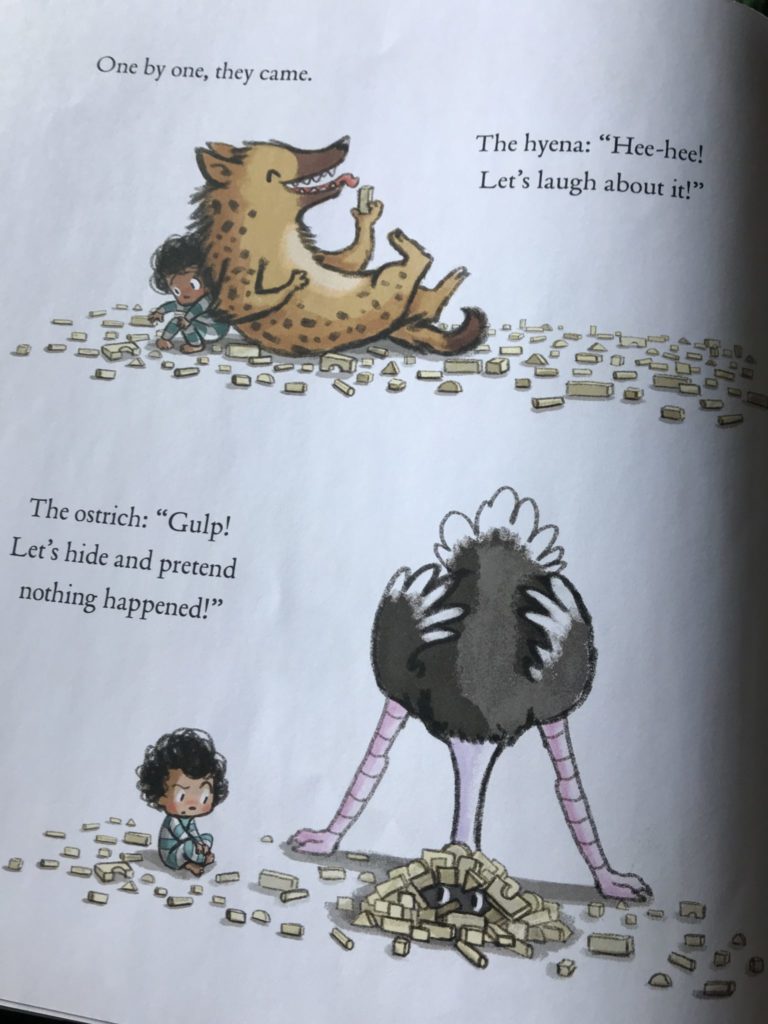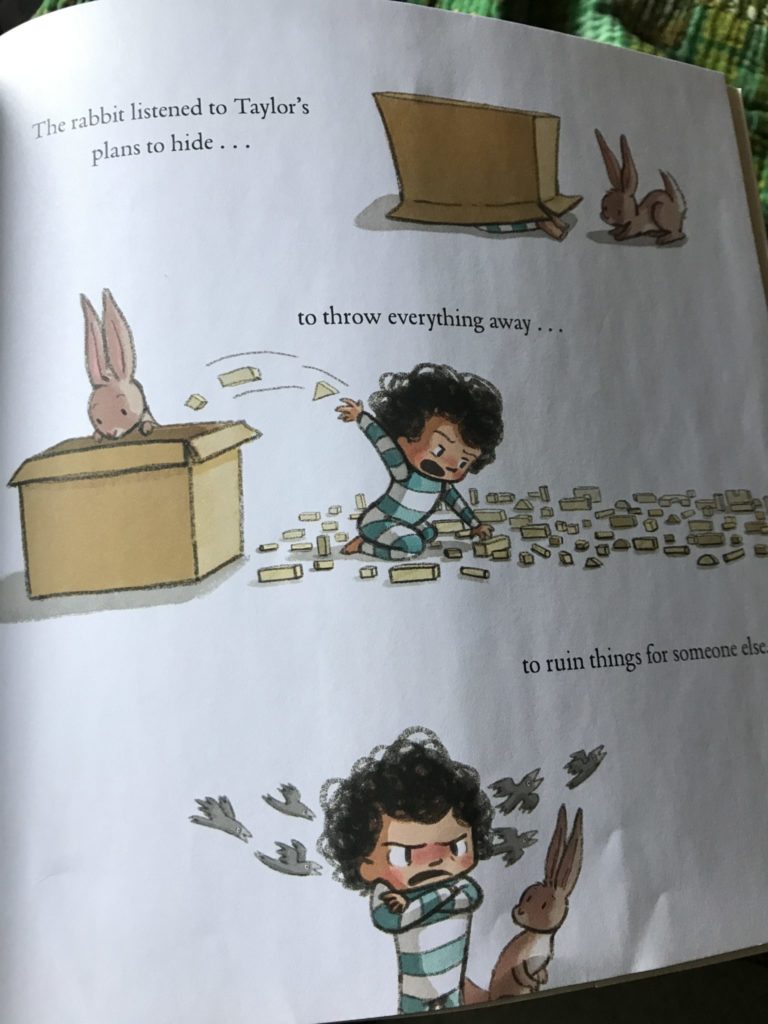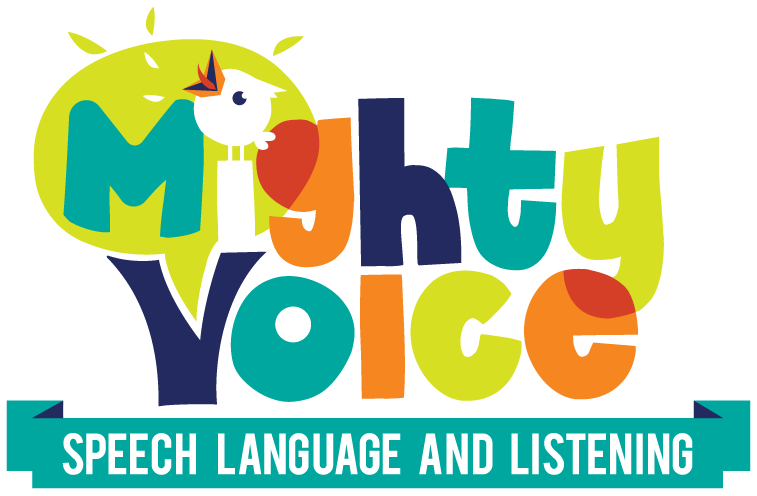As a parent, it seems like part of the job description that you read the books your children choose. Some are delightful, and there are some that make you want to claw your eyes out. Thankfully, The Rabbit Listened (affiliate link) is on that first list for me.
What I love about it is that it’s both a story I enjoy and can relate to, and also has a message that is spot on and helps our kiddos understand feelings, and empathy, and work on building their theory of mind. It also helps that the book has beautiful, expressive illustrations.
The Plot
In the story, Taylor is building a magnificent tower. Unfortunately, it comes crashing down on him. A series of different animals comes to try to help him, each with their own ideas about what will help.

The bear wants him to get angry. The chicken wants to talk about….the snake wants to go and destroy something that belongs to someone else. Each animal has their own idea about what Taylor should do, but Taylor isn’t ready or interested in doing any of them.

Until the rabbit comes along. The rabbit is quiet, and just cuddles up next to Taylor. Eventually, the rabbit listens to Taylor, while all of the feelings and thoughts come flooding out.

Why I love this book so much
- It’s relatable, even as an adult. Who hasn’t had a bad day, or situation, where all you really want or need is someone to listen?
- It teacher our kids that all feelings are accepted. My philosophy, as a parent and a therapist, is that all feelings are acceptable and should be welcomed. We can’t always allow kids to act on those feelings (ie hitting when you’re mad or throwing a toy at your brother), but the feelings themselves should be accepted.
- It helps kids visually see, and then with our help, name their feelings. Depending on a child’s age, you can adapt the language you use. For younger children, you might talk about Taylor and the animals being mad, or sad, or jealous or frustrated. As kids get older, we can add in more complex language like being spiteful or teach them idioms like “put your head in the sand” when we see the picture of the ostrich trying to hide.
- It tells kids they’re not alone. We all have experiences where our (real or proverbial) tower topples. We have all been there, which leads to…
- It teaches kids what empathy can look like. When they see the rabbit being empathetic and listening to Taylor, it helps them understand what empathy is. As we read, we can point out times when others were empathetic with us, or when we saw our children being empathetic.
We got our copy of this book through Dolly Parton’s Imagination Library. If you’re in the United States, Canada, Ireland, the UK, or Australia, you can sign your child up to get free books.
Are there other books about feelings and empathy that you love? Drop by our Facebook and Instagram and let me know what they are!
This post contains affiliate links. As an Amazon Associate I earn from qualifying purchases. Thank you for supporting Mighty Voice.

